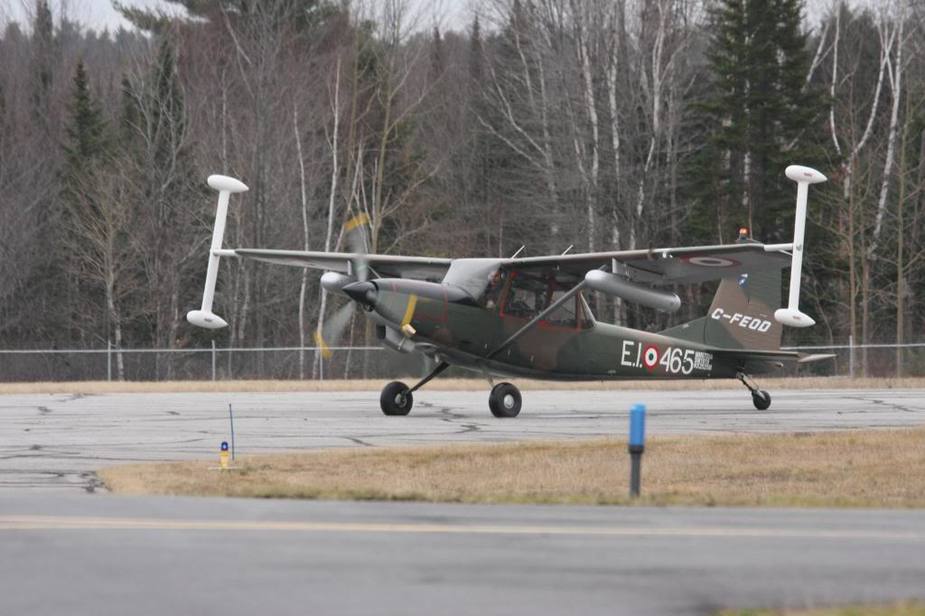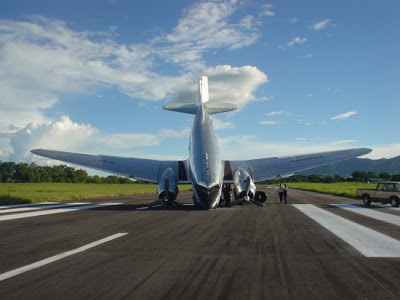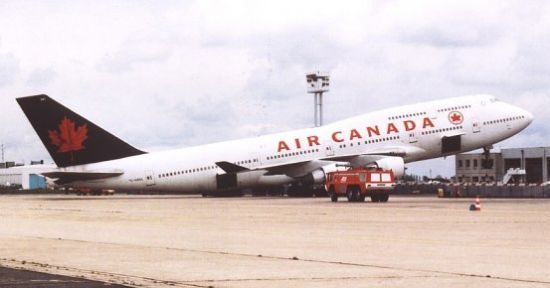The DC-3 I flew had no tail wheel steering, and if you forgot the tail wheel lock, it could get exciting - and I was not flying in crosswinds to speak of. I have been aboard for some magnificent crosswind landings though, flown by pilot who do know how to fly a DC-3!
Generally, tailwheel aeroplanes are better suited to rough field operation than nose wheelers. That's why a lot of such aeroplanes (Husky, Super Cub, Beaver, Maule etc) are tailwheelers.
Far from being xwind limited, many are far better to operate in these conditions than are tri-gears, and not just for the extra prop clearance.
Regarding the tailwheel airliner that went rabbit hunting, these days with few ATPLs having any tailwheel experience at all, let alone decades of it as they did back in the day, it's not unusual for them to struggle with such machines. I'm told BAe used to have a lot of trouble finding company pilots who could handle their Mosquito on the ground (the one that crashed at Barton off a flying display - nothing to do with it being a taildragger); thousands of hours and lots of big jet time don't give you the engrained foot / eye / hand co-ordination needed to competantly handle a taildragger. Only taildragger experience can give you that!
I am far from an exceptional pilot - just an ordinary Sunday bimbler. But I've never ground looped an aeroplane. Ever. That's not because I'm 'special', it's because I've been flying that configuration for well over 30 years in all sorts of conditions into everything from major international airports to the tiniest most un-level, tree-obstructed out of wind farm strip.
But you lose a huge amount of crosswind tolerance, forward view in some types, etc...
Not a huge amount (in fact, a Cessna 170 has better crosswind capability than a swept-tail Cessna 172, which is something I've discovered first hand!) if any at all.
It's not just prop clearance, but if you're landing on rough/soft/unprepared surfaces, you can fit bigger main wheel tyres only fitting two big draggy wheels instead of three, and also avoid the feedback effect of landing on a soft field producing braking of its own, loading up the nosewheel (adding more drag and making the nosewheel dig in still further) which is precisely what you don't want to happen to the nose wheel leg nor what holds it to the front of the aircraft.
As a young airline co-pilot I was fortunate enough to learn my craft with captains who had flown as commanders such aviation icons as the Hastings,Viking DC3 and many other heavy tailwheel aircraft.They were never very complimentary about the handling characteristics in strong crosswinds of those aircraft.When you,ve got to get the job done in as near to all weather as possible the tri-gear usually wins.Yes I know of a highly skilled Tiger Moth pilot who manages to operate in 25 knots crosswind on a trial lesson operation.Not for the avrage pilot though and perhaps an element of luck involved.The advent of the one runway airfield as the normal has made tailwheel operations much more limiting!!
As a young airline co-pilot I was fortunate enough to learn my craft with catains who had flown as commanders such aviation icons as the Hastings,Viking DC3 and many other heavy tailwheel aircrafts.They were never very complimentary about the handling characteristics in strong crosswinds of those aircraft.When you,ve got to get the job done in as near to all weather as possible the tri-gear usually wins.Yes I know of a highly skilled Tiger Moth pilot who manages to operate in 25 knots crosswind on a trial lesson operation.Not for the avrage pilot though and perhaps an element of luck involved.The advent of the one runway airfield as the normal has made tailwheel operations much more limiting!!
Airliners for the past 60 years have been nosewheel there,s a good reason for that.
I was flying the 172 down to Reno for a show where a certain very famous non DC-3 vintage tailwheel airliner was booked to appear. Landing in for fuel in Madras, Oregon, I noticed said airliner taxying out.
Gesturing to the now departing unique star attraction, the refuelling guy said "Wow they sure went hunting for rabbits with that one", claiming it had ground looped off the runway and into the brush on arrival, very fortunately without damage.
I doubt the chap up front was a low time PPL!
real men fly taildraggers (at least from time to time)..I am just surprised it was not mentioned here before ;-)...just kidding. But there is something on that. As mentioned before taildragger will learn you how to land properly, not just change from flight mode into taxi mode. But beware, there are different types of taildraggers - even they are looking quite the same. Take Zlin Z-126 and Zlin-226MS. Behind the firewall the airframe is not too much different (Z-226 a bit lighter despite common trend in aircraft models evolution and it´s flown from the rear seat), the same wing, the same tail. 226 has 180 HP engine, 126 105 HP. So something like 80 lbs of weight difference before firewall. To land 126 without hopping for the rest of runway and beyond you really need to make three point landing (and I do not mean left wheel, left wingtip and propeller as those three point) while 226 will make just a single hop even you were not so precise about landing. No problem to make wheel landing on 226, but I never tried it on 126 - I had a feeling she is not going to like it.....

I still think this looks like a plane with training floats so you can't catch a wingtip (even when inverted!).
Those with soggy handling and a steering wheel have tri-gear.
Sure! Apart from some exceptions:

This will increase the skill level of those who require such improvement, which is a good thing.
Sure. More Me109 and Fw190 have been lost in landing accidents than shot down. Certainly a good thing, otherwise we would all speak german now ;-)
Only tail wheel light aeroplanes look 'right'.
Sure!

Well, I've just come across this and don't wish to plough through several pages of posts. I'll just say:
1) Flying tailwheel aeroplanes is much more fun. Apart from the extra fun of that gear configuration in itself, tail wheels tend to be fitted to aeroplanes with spirited handling and a stick. Those with soggy handling and a steering wheel have tri-gear.
2) Tailwheel aircraft demand to be landed correctly; unlike tri-gears they will not tolerate sloppy technique. This will increase the skill level of those who require such improvement, which is a good thing.
3) There is NO good looking tri-gear light aircraft. Only tail wheel light aeroplanes look 'right'. All the good looking tri-gears are heavy types, not light aircraft.